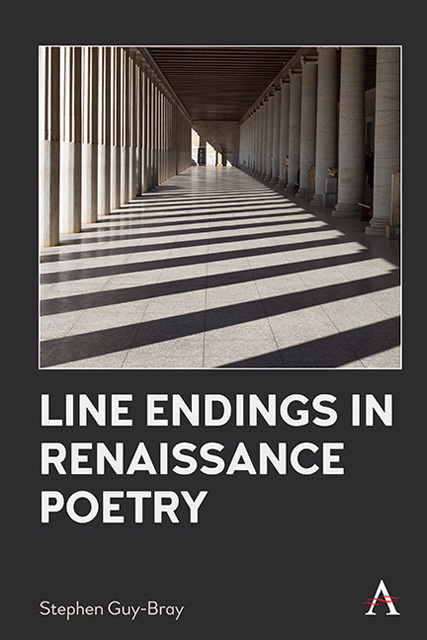Chapter 1 - Introduction
Published online by Cambridge University Press: 10 January 2023
Summary
This is a book about some of the ways in which Renaissance poets ended lines of poetry. Line endings have not attracted much critical attention as a whole, although there is certainly a large body of scholarship on line endings in particular poems and on some of the subjects that I shall discuss in this book. There is, for instance, substantial critical discourse on rhyme and in the paragraphs that follow this I mention both a book that focuses on how poems end and one that looks as the line as a unit. But I want to focus more attention on line endings in general, as I think they are, or can be, the defining feature of the poem. In an interview with L. S. Dembo in 1968, the poet George Oppen said that
The meaning of a poem is in the cadences and the shape of the lines and the pulse of the thought which is given in those lines. It’s not just the line-endings as punctuation but as separating the connections of the progression of thought in such a way that understanding of the line would be changed if one altered the line division.
One way to paraphrase this would be to say that line endings call attention to themselves and shape the poem for readers as they create the poem on the page. This, at least, is what line endings should do. Many line endings are unemphatic and seem completely arbitrary, but in this book, I’ll look at line endings that are noticeable and sometimes even obtrusive.
When I wrote in the first paragraph that line endings are the defining features of the poem, I meant “defining” in both its literal and metaphorical senses, as the line breaks are what create a poem. If a poem did not have line breaks but instead marched relentlessly from margin to margin, then it would just be prose. The breaks, the white spaces that follow each poetic line, allow us to recognize a poem as a poem even if we cannot make out or understand the words or even identify the language in which the text is written: the unusual amount of blank space on the right side of the page (unusual compared to prose, that is) tells us that we’re looking at a poem.
- Type
- Chapter
- Information
- Line Endings in Renaissance Poetry , pp. 1 - 14Publisher: Anthem PressPrint publication year: 2022



